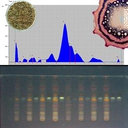Oral toxicity study of certain plant extracts containing pyrrolizidine alkaloids.
Paraules clau
Resum
Pyrrolizidine alkaloids (PAs) are a class of toxic compounds which are found in plants. Poisoning caused by these toxins is associated with acute and chronic liver damage. Tussilago farfara (coltsfoot), Petasites hybridus (common butterbur), Senecio vernalis (eastern groundsel) and Symphytum officinale (comfrey) are traditional phytotherapic species, which beside the therapeutic bioactive compounds contain PAs. The aim of the paper was to assess the safety of some dry extracts obtained from these species. For the determination of acute toxicity, Organization for Economic Cooperation and Development (OECD) Guideline No. 423 was used. For the determination of repeated dose oral toxicity, Senecionis vernalis herba and Symphyti radix extracts (250 mg÷kg) were administrated, by gavage, for 28 days, and their effects on animal weight, liver and biliary functions, hepatic tissue and oxidative stress were investigated. After the acute toxicity testing, the dry extracts were placed in the GHS Category V (LD50>5000 mg÷kg, p.o.). For the subacute toxicity testing, no death or any signs of toxicity were observed. Also, no significant differences in biochemical parameters were observed between control and treated groups. The observed histopathological lesions were non-specific and were not consistent with the data reported in the literature for PAs exposure. In conclusion, the administration for 28 days, of the tested extracts, in a dose which correspond to a PAs concentration over the limits imposed in some countries, produced no hepatic and biliary toxic effects. Further studies, extended over a longer period of time, are needed in order to determine the safety of plant extracts containing PAs.






